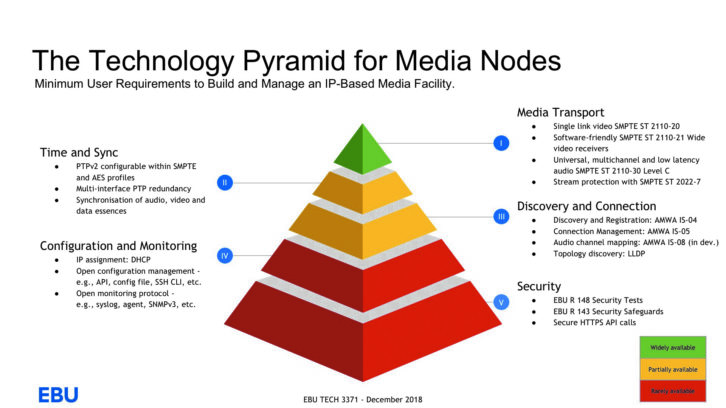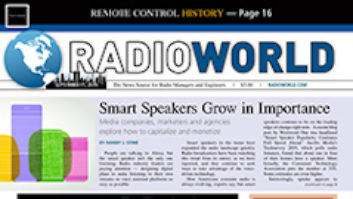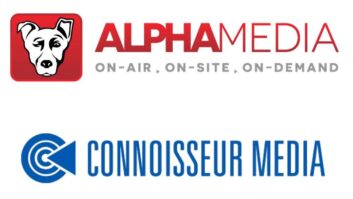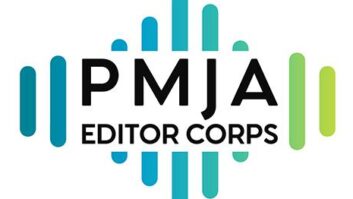In Croatia in June, the World Broadcasting Unions’ Technical Committee supported the completion of standards associated with the European Broadcasting Union’s Technology Pyramid for Media Nodes.
“Broadcasters planning the move to new IP production facilities for television or radio should engage manufacturers with the Technology Pyramid for Media Nodes and ascertain their degree of compliance,” said Michael McEwen, head of the WBU Secretariat. “Further, the missing standards need to be completed as soon as possible so that broadcasters can make the important migration to IP with the required assurance.”
While the pyramid has clear relevance to the television industry, we share it because of the interest radio broadcasters have in the ongoing development of media IP. Radio World invited John C. Lee, P. Eng., chairman of the North American Broadcasters Association and World Broadcasting Union Technical Committees, to provide the background.

In order to achieve the speeds and bandwidths of next-generation television systems, broadcasters are migrating from HD-SDI to IP-based technologies. In December 2017, SMPTE published the ST-2110 set of standards addressing “Professional Media over Managed IP Networks” to support this migration. This set of standards addresses precision system timing (PTP), video essence, audio, ancillary data, etc., in an IP environment.
In December 2018, the European Broadcasting Union (EBU) published the “Technology Pyramid for Media Nodes” (EBU Tech 3371). This pyramid includes all the necessary elements to design, build and operate a fully operational, interoperable, fully plug-and-play SMPTE ST-2110-based, live IP production facility. The EBU Pyramid includes all the needed protocols for timing and synchronization, configuration and monitoring, discovery and connection, media transport and security. It can be viewed as a broadcaster’s set of user requirements for a fully functional live IP production facility.
Along with SMPTE, other organizations have worked diligently to complete the various required protocols — namely the Advanced Media Workflow Association (AMWA) and the Joint Task Force on Networked Media (JT-NM). AMWA first produced Networked Media Open Specification (NMOS) IS-04 addressing “Discovery and Registration.” IS-04 systems are intended to enable “zero-configuration” deployments, reducing the necessity to spend time manually configuring equipment before connection to the network. AMWA’s IS-05 addresses “Device Connection Management” which permits a control device to tell a receiver the stream it is supposed to take at any given time, a function analogous to routing.
JT-NM was tasked with addressing how all these standards and protocols (ST-2110, IS-04, IS-05, PTP, etc.) could fit together to build a complete live IP production system. TR-1001-1, entitled “System Environment and Device Behaviors for SMPTE ST-2100 Devices in Engineered Networks — Networks, Registration and Connection Management,” is the JT-NM’s first such technical recommendation and it aims to simplify the installation and configuration of SMPTE ST 2110-based facilities.
As more and more broadcasters begin to implement IP technologies in their production facilities, it is critically important that vendors address and implement all published standards and specifications in their shipped products. This will greatly alleviate the implementation challenges broadcasters will face. To this end, in April of this year, the EBU published R152 entitled “Strategy for the Adoption of an NMOS Open Discovery and Connection Protocol” to accelerate market adoption of these protocols.
In short, the EBU “Technology Pyramid for Media Nodes” describes a comprehensive IP ecosystem of protocols that empowers the design, implementation and operation of fully-IP production facilities.
The World Broadcasting Unions is the coordinating body for broadcasting unions that represent broadcaster networks across the globe. It was established in 1992. The North American Broadcasters Association acts as secretariat for the WBU. The unions that belong are the Asia-Pacific Broadcasting Union, the Arab States Broadcasting Union, the African Union of Broadcasting, the Caribbean Broadcasting Union, the European Broadcasting Union, the International Association of Broadcasting and the North American Broadcasters Association.







